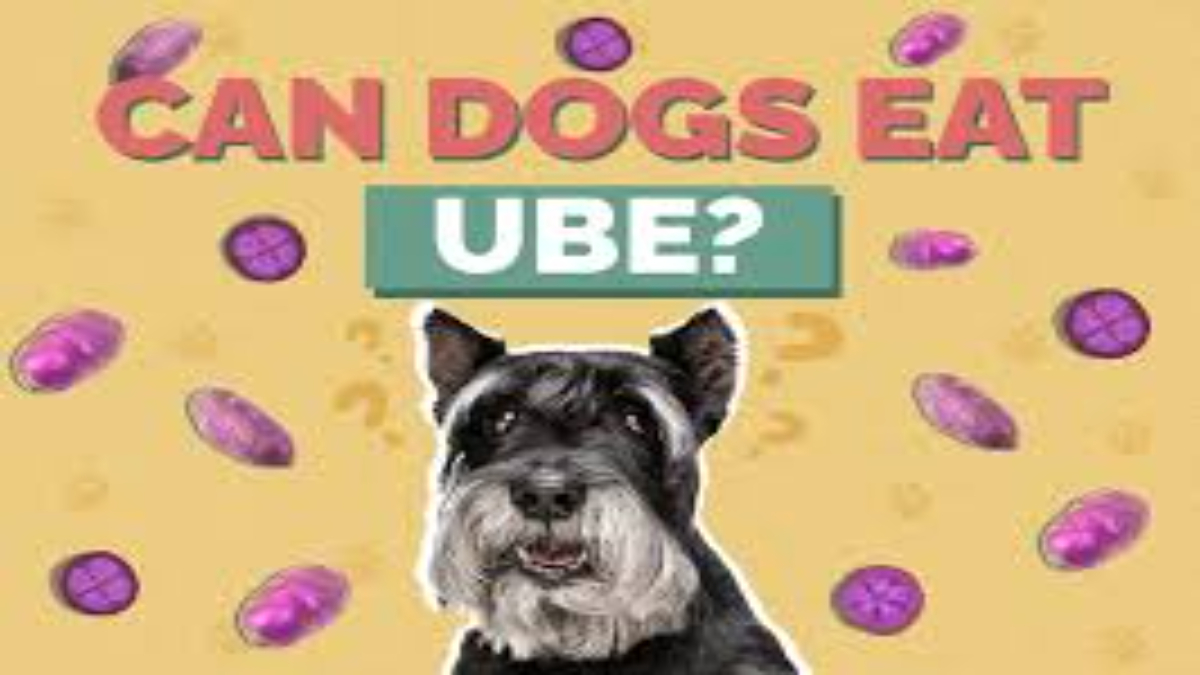As culinary trends evolve, the appeal of exotic ingredients like ube, also known as purple yam, has surged, captivating both chefs and food enthusiasts alike. With its striking color and subtle sweetness, ube has found its way into various dishes and desserts, prompting dog owners to wonder whether their furry companions can partake in this flavorful tuber. Can dogs eat ube? Explore more about ube and its suitability for dogs at Pets Care Insiders.
In this comprehensive exploration, we’ll take a closer look at the nutritional components of ube, assess its potential benefits and risks for canine consumption, and provide detailed guidance on incorporating it into a dog’s diet. Ube boasts its captivating color and a rich array of nutrients essential for canine health and well-being.
Nutritional profile
- Carbohydrates
Carbohydrates are a primary energy source for dogs, fueling their daily activities and metabolic functions. Ube is a valuable addition to a dog’s diet because it offers a significant amount of carbohydrates, especially for active or working dogs with high energy needs.
- Dietary Fiber
Fiber promotes digestive health by supporting regular bowel movements and preventing constipation. Ube’s fiber content contributes to gastrointestinal wellness in dogs, ensuring optimal digestion and nutrient absorption.
- Vitamins and Minerals
Essential vitamins and minerals found in ube support dogs’ general health. It has a high concentration of vitamin C, an antioxidant that boosts immunity and helps fight oxidative stress. Additionally, ube contains potassium, manganese, and other micronutrients vital for various physiological functions, including muscle function, bone health, and cellular metabolism.
- Antioxidants
The vibrant purple hue of ube is attributed to its high concentration of anthocyanins, potent antioxidants known for their anti-inflammatory and immune-boosting properties. These compounds enhance the visual appeal of ube and offer potential health benefits for dogs by protecting against cellular damage and supporting overall well-being.
Potential Risks and Considerations
Can dogs eat ube? Although ube provides many nutritional benefits, using responsible feeding techniques to protect dogs’ health and safety is crucial. Consider the following factors before introducing ube into a dog’s diet:
- Allergies and Sensitivities
Like people, dogs may experience dietary allergies or sensitivity reactions, including ube. An allergic reaction may cause hives, skin rashes, itching, or an upset stomach. It’s essential to gradually introduce ube to your dog and watch closely for adverse reactions.
- Digestive Upset
Rapidly introducing new foods or overfeeding ubes can lead to digestive disturbances in dogs, such as diarrhea, vomiting, or abdominal discomfort. To avoid gastrointestinal upset, introduce ube in small amounts and observe your dog’s response before increasing the serving size.
- Oxalate Content
Oxalates are naturally occurring compounds found in ube that, in susceptible individuals, may contribute to the formation of kidney stones. While the oxalate content in ube is generally low, dogs predisposed to urinary tract issues may need to limit their intake of high-oxalate foods to prevent kidney stone formation.
Guidelines for Feeding Ube to Dogs
To safely incorporate ube into a dog’s diet, follow these practical guidelines:
- Gradual Introduction: Embrace a Patient Approach
Embark on the ube journey with your furry friend by offering small, cooked cubes as a treat or meal addition. Observe closely for any signs of allergies, sensitivities, or digestive discomfort. Patience is critical as you gauge your dog’s response to this new culinary adventure.
- Proper Preparation: Cook with Care
When it comes to preparing ube for your pooch, it’s important to cook with care. Properly cooked ube not only ensures digestibility but also eliminates potential hazards. Avoid the pitfalls of raw or undercooked yams, which may pose choking hazards or digestive challenges for your canine companion. Opt for gentle cooking methods such as baking, boiling, or steaming until tender perfection is achieved.
- Minimal Processing: Prioritize Purity
Elevate your dog’s dining experience by serving pristine, unadulterated ube delights. Avoid dishes laden with harmful additives like sugars, fats, or excess salt. Embrace simplicity and let the natural goodness of ube shine through, providing your dog with a wholesome and nourishing culinary experience.
- Variety and Moderation: Embrace Culinary Diversity
Infusing excitement into your dog’s diet is best achieved by incorporating ube as part of a diverse and balanced meal plan. Remember to rotate this purple gem with other canine-friendly fruits and vegetables to offer a symphony of flavors and nutrients. Striking a harmonious balance by embracing moderation ensures that ube complements rather than dominates your dog’s diet, promoting a balanced and enjoyable eating experience.
- Veterinary Consultation: Harnessing Professional Guidance
Forge a collaborative partnership with your trusted veterinarian to navigate the complexities of canine nutrition confidently. Seek tailored advice and recommendations, especially if your dog has specific medical conditions or dietary requirements. Empower yourself with expert insights to prioritize your dog’s health and well-being.
Conclusion
Can dogs eat ube? Ubes can be a valuable addition to a dog’s diet when introduced responsibly and in moderation. Its nutrient-rich profile, including carbohydrates, fiber, vitamins, minerals, and antioxidants, offers several potential health benefits for canine companions. However, it’s essential to consider possible risks such as allergies, digestive upset, and oxalate content when feeding tubes to dogs.
Following the recommended guidelines and monitoring your dog’s response, you can safely incorporate ube into their diet as an occasional and enjoyable treat. As always, prioritize your dog’s health and well-being by consulting a veterinarian for personalized dietary advice and guidance tailored to their needs. With careful consideration and responsible feeding practices, you can provide your dog with a nutritious and enjoyable culinary experience that supports their overall health and vitality.
